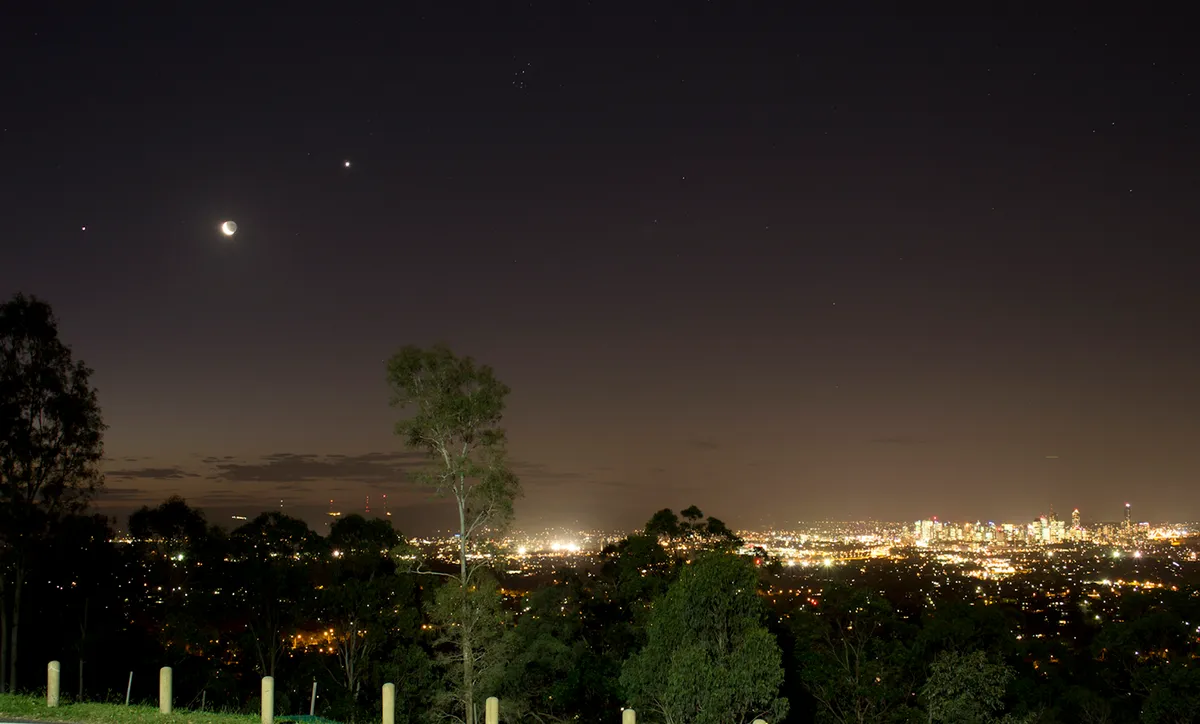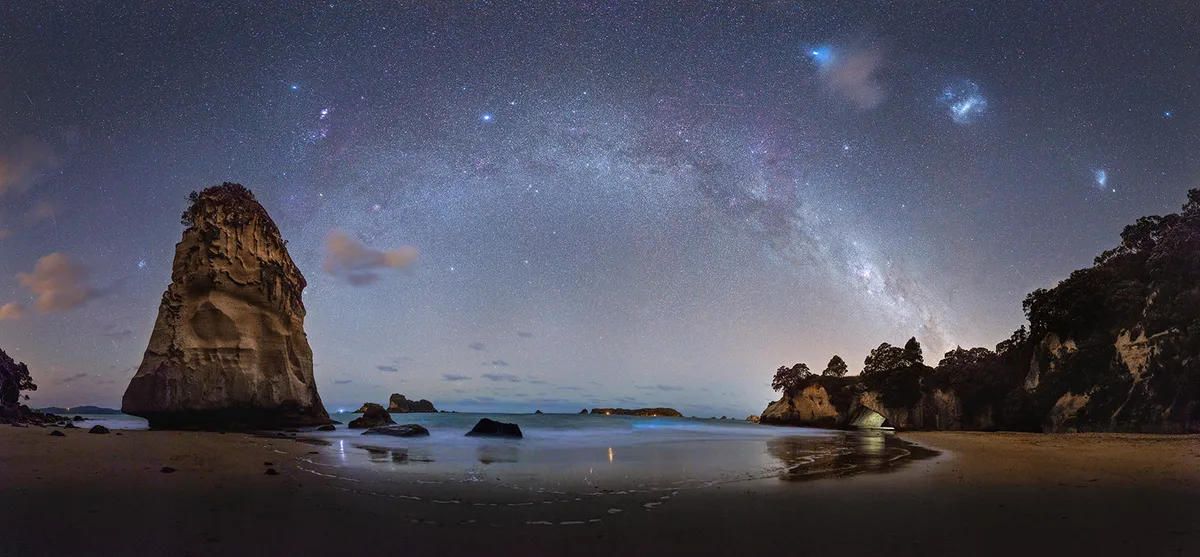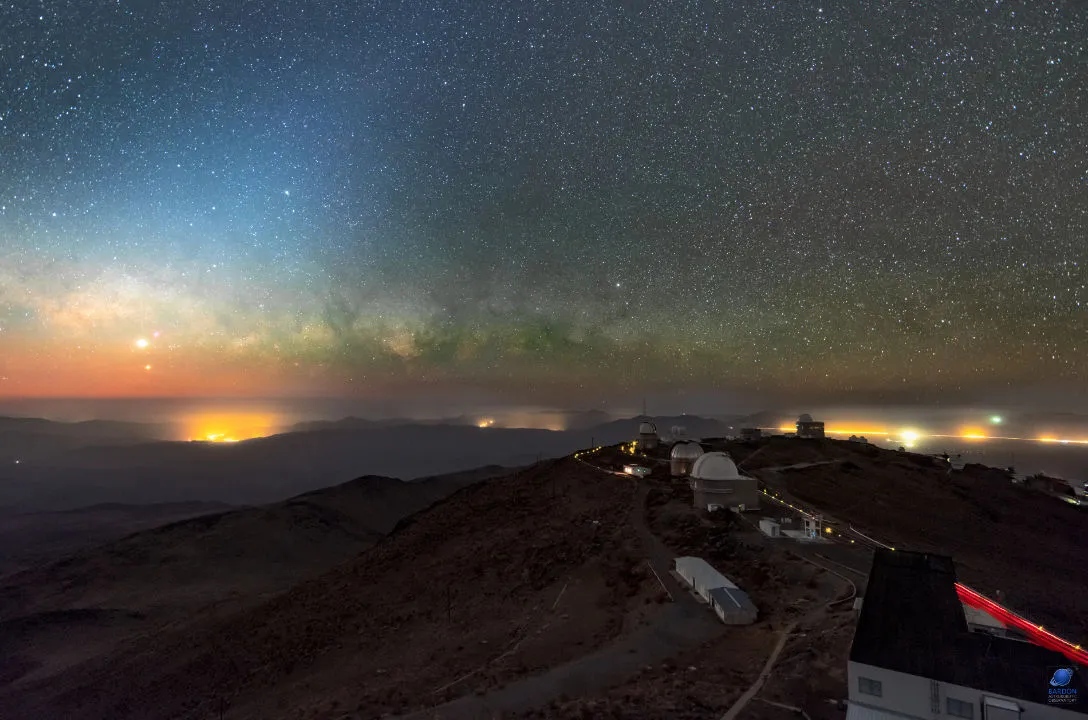If you're based in the Southern Hemisphere and want to know what you can see in the night sky tonight, this page is for you.
Our monthly-updated night-sky guide will show you what you can see in the Southern Hemisphere over the coming weeks.
We'll include monthly highlights, stars, constellations, planets and deep-sky objects.
For more advice, read our guides to Southern Hemipshere stargazing and the best night-sky targets to see in Australia.
Highlights
Four planets that were in conjunction with the Sun and invisible last month now return to the eastern predawn sky.
Brilliant Venus is by far the brightest, with Saturn 8° to the right, shining at first magnitude.
At a similar brightness is Mercury, 2° below Saturn.
Neptune (needing a telescope to view) rises from below Mercury and they pass on 17th, only 0.6° apart.
On 25 April a thin crescent Moon has an impressive conjunction with Venus and Saturn, forming an isosceles triangle.

Stars and constellations
In April, our magnificent Milky Way is seen edge-on, with its many open star clusters and nebulae residing in the plane of our Galaxy.
In contrast, to the north is the realm of distant galaxies.
Common to both regions, scattered across the sky are globular star clusters, which are distributed in a sphere centred on our galactic core.
You might say stars are common to both too, but most naked-eye examples are solar neighbours, only a couple of hundred lightyears away.

The Planets
Uranus is poorly placed, setting around the end of twilight mid-month.
It’s followed by another denizen of the outer Solar System, Jupiter, which spends April inside the horns of Taurus, not far from Aldebaran.
Get onto Jupiter early, as it will be setting around 21:00. Mars is a more leisurely target, being near the meridian at sunset and departing around midnight.
There’s no further planetary action until Venus, Saturn, Mercury and Neptune are visible low in the predawn sky.

Deep-sky
This month, a trip to Hydra. Near its border with Centaurus lies the spectacular galaxy M83 or NGC 5236 (RA 13h 37.0m, dec. –29° 52’).
Even a 60mm scope shows this seventh-magnitude barred spiral’s distinctive bright core with a 5-arcminute long bar, surrounded by a 14-arcsecond halo.
Larger scopes show this to be mottled; 200mm will reveal spiral arms curving off the ends of the bar in an anticlockwise direction.
Heading westward, Hydra presents another gem: NGC 3242, aka the Ghost of Jupiter Nebula (RA 10h 24.8m, dec. –18° 39’).
This seventh-magnitude pale-blue planetary gets its name from being around the same size as the planet Jupiter, at 30 x 38 arcseconds
Its obvious disc has a fuzzy edge, with an 11th-magnitude central star. If the seeing is good, look for a dark gap surrounding this star.

Southern Hemisphere Star Charts
Access this month's and all previous star charts for the Southern Hemisphere by clicking on the links below.
- Southern Hemisphere Star Chart April 2025 (PDF)
- Southern Hemisphere Star Chart March 2025 (PDF)
- Southern Hemisphere Star Chart February 2025 (PDF)
- Southern Hemisphere Star Chart January 2025 (PDF)
- Southern Hemisphere Star Chart December 2024 (PDF)
- Southern Hemisphere Star Chart November 2024 (PDF)
- Southern Hemisphere Star Chart October 2024 (PDF)
- Southern Hemisphere Star Chart September 2024 (PDF)
- Southern Hemisphere Star Chart August 2024 (PDF)
- Southern Hemisphere Star Chart July 2024 (PDF)
- Southern Hemisphere Star Chart June 2024 (PDF)
- Southern Hemisphere Star Chart May 2024 (PDF)
- Southern Hemisphere Star Chart April 2024 (PDF)
- Southern Hemisphere Star Chart March 2024 (PDF)
- Southern Hemisphere Star Chart February 2024 (PDF)
- Southern Hemisphere Star Chart January 2024 (PDF)
- Southern Hemisphere Star Chart December 2023 (PDF)
- Southern Hemisphere Star Chart November 2023 (PDF)
- Southern Hemisphere Star Chart October 2023 (PDF)
